#1883–1918
Explore tagged Tumblr posts
Text






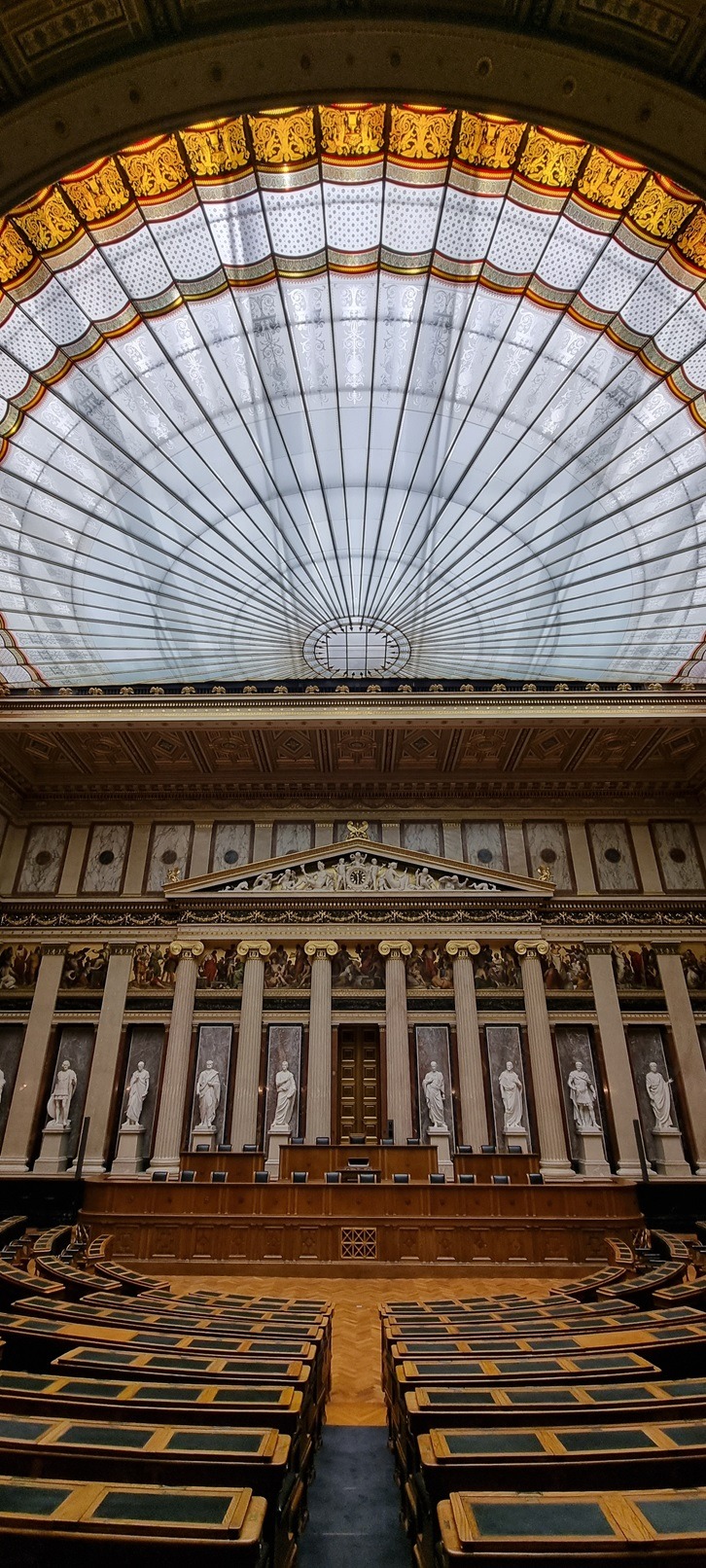
Austrian Parliament Building, Dr. Karl Renner-Ring 3, 1017 Wien Österreichisches Parlamentsgebäude Здание австрийского парламента Bâtiment du Parlement autrichien ────────────────────── Former Plenary hall of the House of Deputies (1883–1918) inside the Austrian Parliament Building, Vienna, Austria Ehemaliger Sitzungssaal des Abgeordnetenhauses 1883–1918 Бывший зал заседаний Палаты представителей 1883–1918 гг. Ancienne salle de réunion de la Chambre des représentants 1883–1918
#Austrian Parliament Building#Austria#Parliament#building#Vienna#Theophil Hansen#1884#Parlamentsgebäude#Österreich#Wien#Parlament#здание#Парламент#Австрия#bâtiment#parlement#autrichien#Autriche#Vienne#Вена#Sitzungssaal#Abgeordnetenhaus#1883–1918#Plenary hall#House of Deputies#зал заседаний#Палата представителей#ancienne salle de réunion#Chambre des représentants
4 notes
·
View notes
Text
Sea Shanty Books
For all those who are looking for books on the subject of sea shanties.
The Early Naval Ballads of England, by J.O. Halliwell, 1841 Naval Songs, by S.B. Luce, 1883 The Music of the Waters, by Laura A. Smith, 1888 Songs of Sea and Sail, by Thomas Fleming Day, 1898 Old Sea Chanties, by J. Bradford and A. Fagge, 1904 Sailors' Songs or Chanties, by Ferries Tozer and F.J. Davis, 1906 Sea Songs and Shanties, by Captain W.B. Whall, 1910 Shanties and Forebitters, by Mrs. Clifford Beckett, 1914 Songs of Sea Labour, by Frank T. Bullen and W.F. Arnold, 1915 King's Book of Chanties, by Stanton H. King, 1918 Capstan Chanteys, by Cecil K. Sharp, 1919 Pullings Chanteys, by Cecil K. Sharp, 1919 Deep Sea Chanties, by Owen Trevine, 1921 The Shanty Book, Part 1, R.R. Terry, 1921 Sea Songs and Ballads, by C. Fox Smith, 1923 Roll and Go: Songs of American Sailormen, by Joanna C. Colcord, 1924 Sea Chanties, by Geoffrey Toye, 1924 Songs of the Sea and Sailors Chanteys, by Robert Frothingham, 1924 Ballads and Songs of the Shanty- Boy, by Franz L. Rickaby, 1926 The Shanty Book Part II, R.R. Terry, 1926 The Seven Seas Shanty Book, by John Sampson, 1927 A Book of Shanties, by C. Fox Smith, 1927 Salt Sea Ballads, by R.R. Terry, 1931 American Sea Songs and Chanteys, by Frank Shay, 1948 Shantymen and Shantyboys: Songs of the Sailor and the Lumberman, by W.M. Doerflinger, 1951 The Shell Book of Shanties, 1952 Sea Songs of Sailing, Whaling and Fishing, by Burl Ives, 1956 Shanties from the Seven Seas: Shipboard Work- Songs from the Great Days of Sail, Stan Hugill, 1961 Sailo's Songs and Shanties, by Michael Hur, 1965 Shanties and Sailors's Songs, by Stan Hugill, 1969
269 notes
·
View notes
Text

Erwin Hubert (1883-1963)
1918
147 notes
·
View notes
Text

Hinko Smrekar (1883–1942) - A New Life,
after 1918
source
97 notes
·
View notes
Text

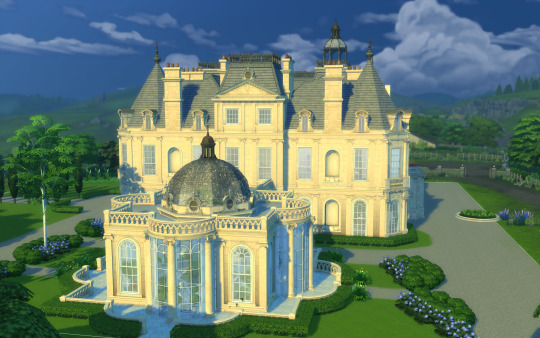
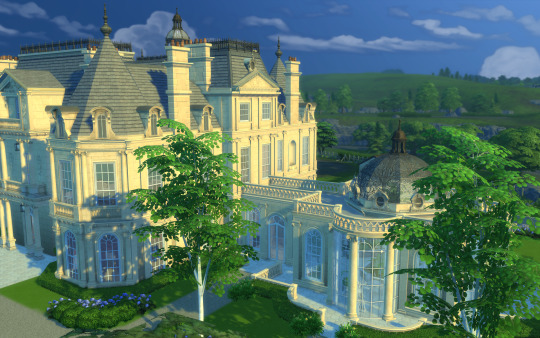

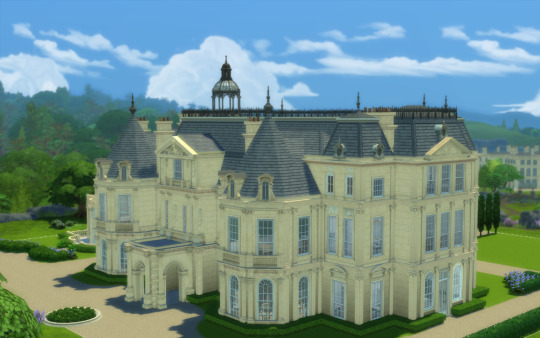

Halton House
Hace un instante
Hi guys!!
I'm sharing Halton House. This is the 15th building for my English Collection and the second Rothchild house I recreated.
I decorated some interiors for reference, but I could not find the real distribution of the house, so I just worked with pictures I found.
You might be familiar to the central hall and stairs, as they are the ones used for Bridgerton House in the series.
I chose to build the version with the conservatory, as I think this was a glory lost to time.


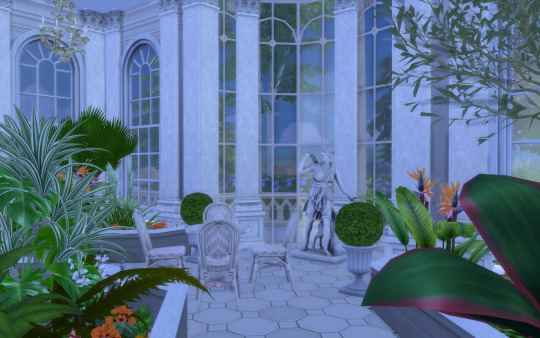


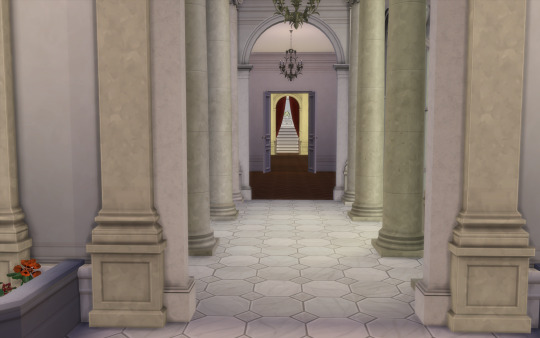

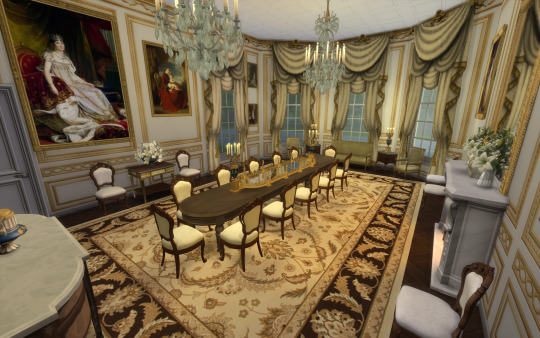




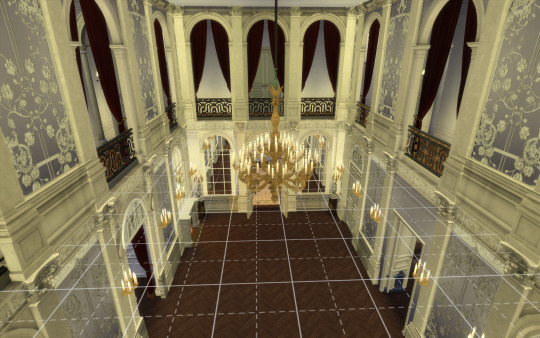
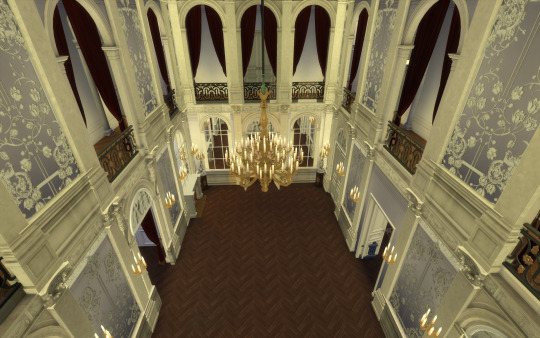


History of the house: Halton House is a country house in the Chiltern Hills above the village of Halton in Buckinghamshire, England. It was built for Alfred Freiherr de Rothschild between 1880 and 1883. It is used as the main officers' mess for RAF Halton and is listed Grade II* on the National Heritage List for England.
There has been a manor house at Halton since the Norman Conquest, when it belonged to the Archbishop of Canterbury. Thomas Cranmer sold the manor to Henry Bradshaw, Solicitor-General in the mid-16th century. After remaining in the Bradshaw family for some considerable time, it was sold to Sir Francis Dashwood in 1720 and was then held in the Dashwood family for almost 150 years.
The site of the old Halton House, or Manor, was west of the church in Halton village. It had a large park, which was later bisected by the Grand Union Canal. In June 1849 Sir George Dashwood auctioned the contents and, in 1853, the estate was sold to Lionel Freiherr de Rothschild.
Lionel then left the estate to his son Alfred Freiherr de Rothschild in 1879. At this time the estate covered an approximately 1,500-acre (610-hectare) triangle between Wendover, Aston Clinton, and Weston Turville.
It is thought the architect was William R. Rodriguez (also known as Rogers), who worked in the design team of William Cubitt and Company, the firm commissioned to build and oversee the project in 1880. Just three years later the house was finished.
The house was widely criticised by members of the establishment. The architect Eustace Balfour, a nephew of the Marquess of Salisbury, described it as a "combination of French Chateau and gambling house", and one of Gladstone's private secretaries called it an "exaggerated nightmare".
At Halton all were entertained by Alfred Freiherr de Rothschild. However, Halton's glittering life lasted less than thirty years, with the last party being in 1914 at the outbreak of World War I. Devastated by the carnage of the war, Freiherr de Rothschild's health began to fail and he died in 1918. Alfred had no legitimate children, so the house was bequeathed to his nephew Lionel Nathan de Rothschild. He detested the place and sold the contents at auction in 1918. The house and by now diminished estate were purchased for the Royal Air Force by the Air Ministry for what was even then a low price of £115,000 (equivalent to £7.08 million in 2023 pounds).
Architecture
For the style of the house Alfred was probably influenced by that of plans for the nearly completed Waddesdon Manor, the home of Baron Ferdinand de Rothschild, his brother-in law. While not so large there is a resemblance, but other continental influences appear to have crept in: classical pediments jut from mansard roofs, spires and gables jostle for attention, and the whole is surmounted by a cupola. The front of the house features a porte-cochère. A Rothschild cousin described it as: "looking like a giant wedding cake".
If the outside was extravagant, the interior was no anti-climax. The central hall (not unlike the galleried two-storey hall at Mentmore Towers) was furnished as the "grand salon". Two further drawing rooms (the east and west) continued the luxurious theme. The dining and billiards rooms too were furnished with 18th-century panelling and boiseries. The theme continued up the grand, plaster panelled staircase to the bedrooms. The whole was furnished in what became known as "Le Style Rothschild", that is, 18th-century French furniture, boulle, ebony, and ormolu, complemented by Old Masters and fine porcelain.
A huge domed conservatory known as the winter garden was attached to the house.
For more info: https://en.wikipedia.org/wiki/Halton_House
------------------------------------------------------------------------------



This house fits a 64x64 lot (You can fit the main building to the 50x50 or 50x40 lot if you lose the garden and conservatory)
I furnished just the principal rooms, so you get an idea. The rest is unfurnished so you create the interiors to your taste!
Hope you like it.
You will need the usual CC I use:
all Felixandre cc
all The Jim
SYB
Anachrosims
Regal Sims
King Falcon railing
The Golden Sanctuary
Cliffou
Dndr recolors
Harrie cc
Tuds
Lili's palace cc
Please enjoy, comment if you like it and share pictures with me if you use my creations!
Early access: 08/18/2024
DOWNLOAD: https://www.patreon.com/user?u=75230453
#sims 4 architecture#sims 4 build#sims4#sims 4 screenshots#sims4building#sims4play#sims 4 historical#sims4palace#sims 4 royalty#ts4#sims4life#sims 4 cc#sims 4#sims 4 legacy#sims 4 gameplay#thesims4#the sims 4#ts4cc#ts4 download#ts4 simblr#ts4 gameplay#my sims#sims community#simblr#ts4 screenshots#ts4 legacy
136 notes
·
View notes
Photo

Pavel Filonov (Russian,1883-1941)
Formula of the Cosmos, 1918-1919
Oil on canvas
55 notes
·
View notes
Text

"Dancing Sailors", 1918 by Charles Demuth (1883–1935). American artist.
203 notes
·
View notes
Text

Happy Feast Day
Saint Marianne Cope
1838 - 1918
Feast day: January 23
Patronage: lepers, outcasts, those with HIV/AIDS
Marianne Cope, baptized Maria Anna Barbara Koob, was born in Germany and her family emigrated to the United States the next year. She helped support her family and invalid father until his death and then left home to pursue a religious calling receiving the religious habit of the Franciscan Sisters in Syracuse, New York and new name Marianne. In 1883, by then Superior General, Cope responded to a call to care for the leprosy sufferers in Hawaii. In 1888 she moved to Kalaupapa to care for the dying Fr. Damien. Saint Marianne Cope died of natural causes in 1918 at the age of 80.
Prints, plaques & holy cards available for purchase. (website)
#Saint Marianne Cope#leprosy sufferers in Hawaii#Franciscan Sisters#catholic art#catholic faith#portraitsofsaints
30 notes
·
View notes
Note
Would you ever put any public domain characters into Toyland? Like Tintin is public domain now — if he ended up in Toyland for one reason or another, what would he be as, and why?
Public Domain works that I like to reimagine into and draw inspiration from to the canon of Misfits Toyland:
The Nutcracker and the Mouse King (1816)
The Steadfast Tin Soldier (1838)
The Adventures of Pinocchio (1883)
Dot and Tot of Merryland (1901)
The Life and Adventures of Santa Claus (1902)
Babes in Toyland (1903)
Raggedy Ann Stories (1918)
Raggedy Andy Stories (1920)
Rudolph the Red Nosed Reindeer (1964 film)*
Tintin would never be sent to Toyland since I can't think of a single thing he's done wrong. That kid has a pure heart.

43 notes
·
View notes
Photo

Nuremberg Rally
The Nuremberg Rally, or the Reich Party Congress, was an annual event held from 1927 to 1938 in Nürnberg, Germany. Organised on a massive scale by the National Socialist Party (Nazi), these operations in pomp, ceremony, and propaganda were attended by hundreds of thousands of party members. The climax was always a speech by the Nazi leader Adolf Hitler (1889-1945).
The Power of Propaganda
The National Socialist Party rallies were first held in Nuremberg in Bavaria in 1927 and continued until the outbreak of the Second World War (1939-45). Previously, Nazi rallies had been held in Munich and Weimar, but Nuremberg allowed the Nazis to play on its rich history, since in medieval times, the city had been the diet of the Holy Roman Empire of the German Nation. The Nazis even began to call Nuremberg "the most German of German cities" (Range, 115). The city also had the advantage of a large open space for mass gatherings, the Luitpoldhain park.
These annual events, held each September and attended by Nazi party members, spanned several days. Unlike other gatherings of other political parties, Nuremberg was designed from the start as a place for show and spectacle, not the usual motions and debates on the intricacies of party policy. Hitler wanted unity and decreed that the rallies were to be a "clear and understandable demonstration of the will and the youthful strength" of the National Socialist Party (Range, 149). This was, however, still a period when the Nazi party was battling for electoral recognition, and it was not until 1933, when the Nazis took power, that the Nuremberg rallies became truly grandiose affairs.
The Nazis understood the power of presentation and the positive effects of well-orchestrated pomp and ceremony on a populace that perhaps had yet to be fully convinced of Nazi policies and their wild ambitions for Germany. Hitler had devoted two chapters of his book Mein Kampf (published in 1925) to the subject of propaganda, in particular, the power of imagery and slogans on the masses. Hitler and his master of propaganda Joseph Goebbels (1897-1945), who took on this role in 1928, were constantly on the lookout for opportunities where the people could be impressed by sights, sounds, and words. As Hugh Greene, a British journalist based in Berlin in the late 1930s noted:
Showmanship was very important to the Nazis. I think that Hitler quite consciously wanted to keep the German people, or the mass of them, in a state of constant intoxication. The annual event at Nuremberg was of particular importance. (Holmes, 38)
Hitler, Nuremberg Rally of 1935
H.Hoffmann - Imperial War Museums (CC BY-NC-SA)
People came to Nuremberg on special trains and stayed in military barracks, empty warehouses, tents, and railway carriages. Special guests were invited for their prestige, such as Prince August Wilhelm (1887-1949), the son of Kaiser Wilhelm II (r. 1888-1918), and Winifred Wagner (1897-1990), daughter-in-law of the composer Richard Wagner (1813-1883) and organiser of the important Bayreuth music festival. Sympathetic foreigners, particularly diplomats and journalists, were also invited to the rallies so that they could report back home favourably on Hitler and Nazi Germany.
Continue reading...
33 notes
·
View notes
Text

Bombing of the Wadi Fara, 20 September 1918 [1918] Stuart Reid (1883–1971) IWM (Imperial War Museums)
29 notes
·
View notes
Text

Title: Dancing Sailors
Artist: Charles Demuth
Year: 1918
Medium: watercolor and pencil
Poster’s note:
You’re getting your gay stuff early because I’m impatient. It’s surprisingly difficult to find gay male couples in historical art. Even more so than lesbians and trans people, for some reason. A lot of their depictions are outright sexual. While I don’t have a problem with that, I thought it’d be nice to have a different kind of depiction of gay love. There’s more coming soon.
Source:
#gay#gay men#lgbtq#lgbtqia#queer#lesbian#transgender#lgbt history#fine art#watercolor#art#art inspiration#artwork#1920s#vintage sailors#vintage aesthetic#vintage#artcore#art academia#gay mlm#homosexual#homosexuality#traditional art#painting inspiration#history painting#painting#color theory#color inspiration#color#artists on tumblr
57 notes
·
View notes
Text

Ferdinand Hodler (CH 1853-1918)
6 Self portraits (1883 - 1916)
Oil on canvas
40 notes
·
View notes
Text
If anybody wanted to write a crossover between L.M. Montgomery's books, here is a little help with the ages of the characters (@no-where-near-hero maybe it will be a tiny help for your fanfic):
Anne Shirley - born on 5th of March 1865
Gilbert Blythe - born in 1862 or 1863
James Matthew "Jem" Blythe - born in July 1893
Walter Cuthbert Blythe - born in 1894
Anne "Nan" and Diana "Di" Blythe - born in 1896
Shirley Blythe - born in 1888*
Bertha Marilla "Rilla" Blythe - born in 1900*
Gerald "Jerry" Meredith - born 1894
Faith Meredith - born 1895
Una Meredith - born 1896
Thomas Carlyle "Carl" Meredith - born 1897
Jims Anderson - born in August of 1914
Emily Byrd Starr - born on 19th of May 1888
Ilse Burnley - born in 1888 (probably)
Perry Miller - born in 1887
Frederick "Teddy" Kent - 1887 or 1888
Dean Priest - born in 1865
Patricia "Pat" Gardiner - born in 1913
Rachel "Rue" Gardiner - born in 1919
Winnifred "Winnie" Gardiner - born in 1910
Sidney "Sid" Gardiner - born in 1912
Joseph"Joe" Gardiner - born in 1908
Hilary Gordon - born in 1911
Elizabeth "Bets" Wilcox - born in 1913
David Kirk - born around 1893
Jane Stuart - born in May 1918 or 1919
Valancy Stirling* - born 1883**
Barney Snaith - born 1877**
Cecilia "Cissy" - born 1886**
Olive Stirling - born 1884**
Gay Penhallow - born in 1904***
Nan Penhallow - born in 1904***
Roger Dark - born in 1890***
Donna Dark - born between 1894 and 1896***
Virginia Powell - born between 1894 and 1896***
Peter Penhallow - born between 1888 and 1890***
Margaret Penhallow - born 1872***
Brian Dark - born 1916***
Hugh Dark - born in 1887***
Joscelyn Penhallow: born between 1889-1892***
*In both Anne of Ingleside and Rainbow Valley Shirley is two years older than Rilla. But in Rilla of Ingleside, he turns eighteen few months before Rilla... it is pure chaos. Rilla was supposed to be nearly fourteen, according to the RV, in 1914, but she is nearly fifteen in RoI. So I apologize, but I had a lot of trouble here...
**The Blue Castle is the most difficult to place in time. It is set several years before it was published, and in my own opinion: before Tangled Web and Pat of Silver Bush. Why? Because of this reference: "This was before the day of bobs and was regarded as a wild, unheard-of proceeding—unless you had typhoid." (The Blue Castle). Bobs were already "in fashion" at the beginning of Pat of Silver Bush (so, in 1919, when Pat was six years old: it was said that Winnie wanted to have her hair bobbed) and in Tangled Web (which is set in 1922). Yet, the cars, motorboats and movie theaters were a rather common occurence in The Blue Castle's times. But... there might be an explanation. Valancy doesn't live on PEI, which might have been a little "behind" the rest of Canada, as far as modern technology went. It is my own personal opinion, but I think that it might be set just before the war, at the same time as the end Emily's Quest. I know that the clothes seem more "modern" in TBC, but Emily wore "a little sport suit" and dress that was described as followed "there was so little of it". Teddy and Perry both had cars, as sone of Ilse's cousins. I would say that the Blue Castle book might be set around 1912-1913. Still, the timeline is extremely elusive. Please, let me know, dear Blue Castle Book Club's members, what is your opinion? I think I have read some amazing discussion about TBC's timeline a long time ago, but if I remember correctly, everyone was certain that this novel was set post WWI (me included, until this very moment when I tried to place Pat and Tangled Web and remembered the "bob" quote). So I choose 1912 as the beginning of TBC, when Valancy was twenty-nine.
*** the ages of characters in Tangled Web:
"They were first cousins, who were born the same day and married the same day,--Donna to her own second cousin, Barry Dark, and Virginia to Edmond Powell--two weeks before they had left for Valcartier. Edmond Powell had died of pneumonia in the training camp, but Barry Dark had his crowded hour of glorious life somewhere in France." (Tangled Web).
"Virginia Powell, whose husband had been dead eight years and who was young and tolerably beautiful" (Tangled Web).
"Valcartier, Quebec was the primary training base for the First Canadian Contingent in 1914."
- from: https://www.warmuseum.ca/firstworldwar/history/going-to-war/canada-enters-the-war/training-at-valcartier/
So, from this I assumed that Virginia's husband died in 1914 (so Tangled Web is set in 1922-23). Gay is 18 at the beginning, so she would be born in 1904. If Donna and Virginia were 18-20 when they got married, they would be 26-28 (so still "young"). at the beginning. Peter was 14 when Donna was 8, so he'd be 32-34 at the beginning of the book (same age or a bit older than Roger). Hugh was 35 at the beginning. I guess Joscelyn was a bit younger- most of LMM's heroines are at least two years younger than their love interest. I'd say she might have been 20-23 when she got married, so she'd be around 30-33 at the beginning of the book. I would say Brian is about six years old - he doesn't seem to attend school yet, but is big enough to be sent to the harbour. Margaret Penhallow was about fifty at the beginning of the book.
So sorry that this post was rather long, but it was a great fun to write (even if it took me A LOT of time). Thank you for reading. Please, let me know if you agree. Any feedback will be very welcome!
#lm montgomery#emily of new moon#anne of green gables#tangled web book club#tangled web#aogg#blue castle book club#the blue castle#Pat of silver bush#Rilla of ingleside#Rainbow Valley#I know I haven't included marigold or kilmeny#But I don't know how to place Kilmeny tbh#And I need to reread marigold before i will be able to include her here#I think I will reblog or add them later on
74 notes
·
View notes
Text
i probably haven't read enough Golden Age Comics to make this (I've barely read any, really), but I just spent the whole weekend making this list of birthdates for Earth-Two DC heroes and villians. I could've been working on my Christmas List! But no! My brain just had to get fixated on this. So here it is. This thing I didn't need to make, but my brain wouldn't let me stop working on. So here's a long list of names and birthdays. Nobody asked for this, and it was hellish to make. But my brain still expects me to make three more of these! sigh...
Superman (Clark Kent/Kal-L): 1916
Lois Lane: 1917
Power Girl (Kara Zor-L/Karen Starr): 1916 (Birth Certificate says 1956)
George Taylor: 1887 Died: 1955 (Age at Death: 68)
Jimmy Olson: 1928
Perry White: 1914
Lana Lang: 1920
Steve Bard: 1916
John Kent: 1875 Died: 1938 (Age at Death: 65)
Mary Kent: 1876 Died: 1932 (Age at Death: 60)
Samuel Lane: 1887 Died: 1973 (Age at Death: 86)
Ella Lane: 1889 Died: 1979 (Age at Death: 90)
Lucille Lane: 1920
Susie Tompkins: 1939
Batman (Bruce Wayne): 1915 Died: 1979 (Age at Death: 64)
Catwoman (Selina Kyle): 1920 Died: 1977 (Age at Death: 57)
Robin (Dick Grayson): 1933
Huntress (Helena Wayne): 1957
Batwoman (Kathy Kane): 1922
Alfred Beagle: 1900 Died: 1989 (Age at Death: 89)
Karl Kyle (Catwoman's Brother): 1924
Harvey Kent: 1912
Gilda Kent: 1915
Thomas Wayne: 1883 Died: 1924 (Age at Death: 41)
Martha Wayne: 1884 Died: 1924 (Age at Death: 40)
Phillip Wayne: 1885 Died: 1939 (Age at Death: 56)
Commissioner James Gordon: 1900 Died: 1976 (Age at Death: 76)
Julie Madison: 1915
Linda Page: 1919
Barbara Gordon (James Gordon's Wife): 1900 Died: 1981 (Age at Death: 81)
Anthony Gordon: 1931
The Flash (Jay Garrick): 1918
Joan Garrick: 1920
Winky Moylan: 1916
Blinky Boylan: 1915
Noddy Toylan: 1914
Green Lantern (Alan Scott): 1913
Doiby Dickles: 1896
Irene Miller: 1914
Harlequin (Molly Mayne): 1923
Wonder Woman (Diana Prince/Diana of Themyscira): 1920
Steve Trevor: 1918
Etta Candy: 1927
Paula von Gunther: 1907
Gerta Von Gunther: 1935
Phillip Darnell: 1903
Hawkman (Carter Hall): 1917
Hawkgirl (Shiera Sanders-Hall): 1917
The Atom (Al Pratt): 1921
Mary James Pratt: 1920
Joe Morgan: 1904
The Spectre (Jim Corrigan): 1900
Clarice Winston: 1908
Percival Popp: 1918
The Sandman (Wesley Dodds): 1913
Dian Belmont: 1916
Sandy the Golden Boy (Sanderson Hawkins): 1928
Lawrence Belmont: 1888 Died: 1974 (Age at Death: 86)
Hourman (Rex Tyler): 1913
Wendi Harris: 1936
Jimmy Martin: 1931
Thorndyke Thompkins: 1930
Doctor Fate (Kent Nelson): 1908
Inza Cramer: 1916
Johnny Thunder: 1917
Daisy Darling: 1918
Peachy Pet: 1935
Red Tornado (Ma Hunkel): 1901
Scribbly Jibbet: 1930
Mortimer "Dinky" Jibbet: 1933
Huey Hunkel: 1930
Amelia "Sisty" Hunkel: 1934
Starman (Ted Knight): 1915
Doris Lee: 1917
Woodley Allen: 1893
Doctor Mid-Nite (Charles Mcnider): 1915
Myra Mason: 1918
Wildcat (Ted Grant): 1919
Joan Fortune: 1913
Hiram Skinner: 1921
Mr. Terrific (Terry Sloane): 1920
Wanda Wilson: 1921
Black Canary (Dinah Drake): 1926
Larry Lance: 1925
Star Spangled Kid (Sylvester Pemberton): 1927
Merry, Girl of 1,000 Gimmicks (Merry Pemberton): 1934
Stripesy (Pat Dugan): 1914
Giovanni Zatara: 1918
Sargon the Sorcerer: 1919
Rose Canton: 1924 Died: 1985 (Age at Death: 61)
Alexei Luthor: 1906
Ultra-Humanite: 1844
J. Wilbur Wolfingham: 1910
Colonel Future (Edmond Future): 1918
The Puzzler: 1901
The Prankster (Oswald Loomis): 1908
The Toyman (Winslow Schott): 1910
Metalo (George Grant): 1909
The Penguin (Oswald Cobblepot): 1907
Clayface (Basil Karlo): 1887
The Scarecrow (Jonathan Crane): 1904
Hugo Strange: 1889 Died: 1982 (Age at Death: 93)
The Cavalier (Mortimer Drake): 1915
The Wizard (William Zard): 1913
Brainwave (Henry King): 1910 Died: 1984 (Age at Death: 74)
The Gambler (Steven Sharpe III): 1910 Died: 1987 (Age at Death: 77)
The Thinker (Clifford DeVoe): 1905
Rag Doll (Peter Merkel): 1916 Died: 1986 (Age at Death: 70)
The Fiddler (Issac Bowin): 1915
Anaya Bowin: 1930
The Icicle (Joar Mahkent): 1913 Died: 1986 (Age at Death: 73)
Sportsmaster (Crusher Crock): 1921
Tigress (Paula Brooks): 1923
Silver Scarab (Hector Hall): 1958
Fury (Hippolyta "Lyta" Trevor): 1958
Nuklon (Albert Rothstein): 1960
Northwind (Norda Cantrell): 1958
The Lare (Olivia Corrigan): 1953
Brainwave Jr (Henry King, Jr): 1963
Harlequin II (Noel Loomis-Schott): 1965
Obsidian (Todd Rice): 1966
Jade (Jennifer Lynn-Haden): 1966
Wildcat II (Yolanda Montez): 1955
Hourman II (Rick Tyler): 1966
Starman II (Jack Knight): 1972
Doctor Mid-Nite II (Beth Chapel): 1959
Cyclone (Maxine Hunkel): 1964
The Warlock (Warren Zard): 1974
Hazard (Rebecca Sharpe): 1971
The Gambler II (Steven Sharpe V): 1975
The Fiddler II (Issac Bowin Jr): 1961
The Icicle II (Cameron Mahkent): 1959
Tigress II (Artemis Crock): 1958
Rag Doll II (Peter Merkel Jr): 1951
#justice society of america#jsa#justice society#infinity inc#dc#dc comics#dc universe#dcu#golden age dc#batman#golden age batman#superman#golden age superman#superman comics#power girl#the huntress#kara zor l#helena wayne#jsa comics#old comics#comic book#comic books#comic
14 notes
·
View notes
Photo

Scrapbook cover, from Walt Whitman Papers in the Charles E. Feinberg Collection: Miscellany, 1834-1918; Scrapbooks; 1882-1883.
11 notes
·
View notes